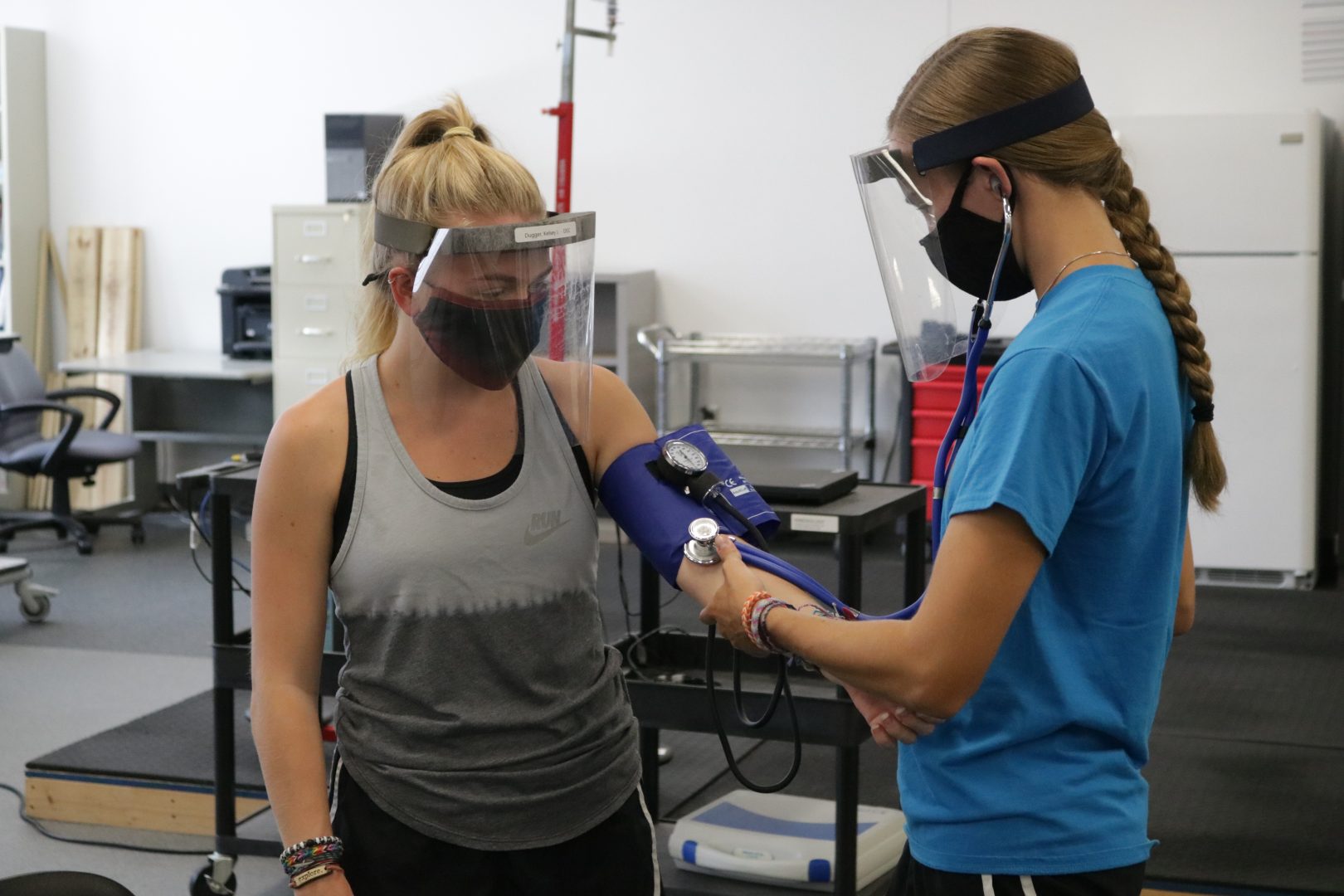With the ongoing COVID-19 pandemic, the College of Health Sciences at the University of Indianapolis has tried its best to keep their students on track. The face-to-face classes are held with caution and a sense of normalcy by the new guidelines, Dean of the College of Health Sciences Stephanie Kelly said.
Associate Dean of the College of Health Sciences Kate Decleene Huber said that she thought it has been challenging for students to adjust to having to do their classes remotely. She said that students in health sciences do not necessarily sign up for the programs to be remote.
“As with [other] students across campus, I think they’re having to learn how to be effective online learners, how to organize in that environment [and] how to reach out to faculty a little bit differently,” Huber said. “I do think that they miss their classmates, so when we talk to cohort liaison[s], or programs, they’re so used to doing things as a cohort—having study sessions, doing social gatherings—which we’ve had lots of talks with them about being responsible.”

When many of their classes are based on face-to-face labs, lectures and physical contact, they are limited in all areas, according to Huber. Kelly said before the COVID-19 pandemic, there were two types of face-to-face classes that had been taking place, one being the lectures and the second being labs.
“What we’re doing [for labs] is reducing the number of students in the classroom and we’re putting them in pods,” Kelly said. “We’ll have groups of four to six students who work closely together, practicing hands-on and they’re only supposed to work with those same four-to-six students in that class .… Even across classes, we have a reduced number in the classes and also compared to how we used to teach the hands-on things, a reduced number of people that they’re practicing their skills on.”
If one of the students were to be exposed, then the whole group would be tested and quarantined rather than the entire class, according to Kelly. To help alleviate the risk of being exposed, students will be provided with personal protective equipment from the university, Kelly said. The equipment includes plenty of face masks, gloves, hand sanitizer, and face shields as well. Professors will also be provided with PPE, Kelly said.
Huber said that the college was fortunate that they still had a number of students graduate on time last year. For this year, they still plan on having a majority of the students on track to graduate on time, although some students are opting to take a delayed track in some programs.
“With everything that happened in the spring, we had students we had to pull from clinical placements and we also had students when we were ready for them to go into health facilities, [they] just weren’t ready for them to go back into health facilities because of their personal circumstances,” Huber said. “We have had people who deferred to maybe graduate three months later until they felt more comfortable.”
Kelly said that while the adjustments were a challenge, she was impressed with the creativity of the faculty and their willingness and commitment to figuring out how to make it work so that students can make it through their courses.
“At this point we’ve managed, there’s been a lot of schools across the nation in PT/OT [and] athletic training who have had to delay graduation for some students and so far we’ve been able to keep all of our students on track,” Kelly said. “… I think through the telehealth, through modifying internships when we could, through being creative, we’ve been able to keep everybody on track to graduate, which is good. I think that’s one of the high priorities we set for ourselves.”






